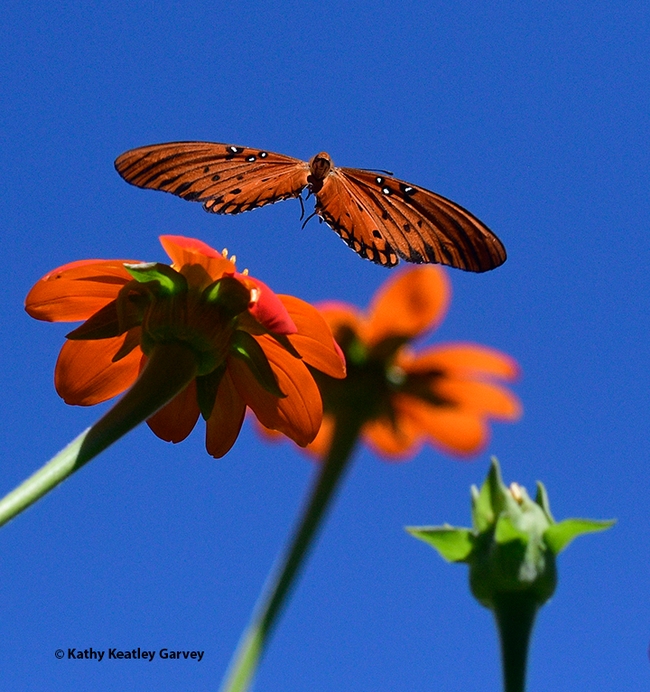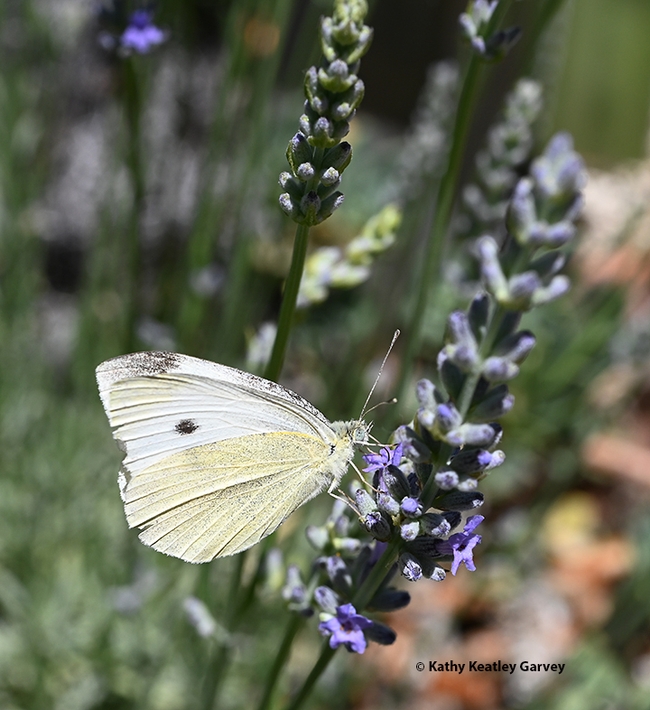Posts Tagged: art
Extreme weather accelerates nitrate pollution in groundwater
Extreme weather spurred by climate change, including droughts and heavy rains, may increase the risk of nitrates from fertilizers ending up in groundwater, according to a recent study from researchers at the University of California, Davis. The study found heavy rains after a drought caused nitrates to seep 33 feet under farm fields in as little as 10 days. The study was published in Water Resources Research.
“The conventional wisdom was that it could take several weeks to years for nitrates to move from the crop root zones to reach groundwater,” said corresponding author Isaya Kisekka, a professor in the Departments of Land, Air and Water Resources and Biological and Agricultural Engineering. “We found these extreme events, such as California's atmospheric rivers, are going to move nitrate more quickly.”
In this study, different methods were used to measure how much nitrate, a component of nitrogen fertilizer, was seeping down through the soil in a tomato and cucumber crop near Esparto, California. Scientists conducted their research from 2021 until 2023 when California was experiencing periods of drought followed by atmospheric rivers. They measured nitrate during both the growing seasons and the rainy seasons.
Drought can leave more nitrogen in soil
Previous studies have shown about 40% of nitrogen fertilizer used for vegetables isn't absorbed by the plants but remains in the soil. During droughts, crops don't use nitrogen efficiently, leading to excess nitrogen in the soil. This study found that if a drought is then followed by heavy rainfall, that sudden burst of water causes nitrate to seep in groundwater more quickly. The nitrate concentration in the shallow groundwater exceeded the U.S. Environmental Protection Agency maximum contaminant level of 10 milligrams per liter for drinking water.
“In California, we often say we swing between droughts and floods,” said Kisekka. “These extreme events that come with climate change are going to make the risk of these chemicals ending up in our drinking water much more severe.”
Groundwater is the primary source of drinking water for most of California's Central Valley. In some regions, such as the Tulare Lake Basin, nearly one-third of drinking and irrigation wells exceed the EPA's safe nitrate level. High nitrate levels in drinking water can increase health risks, especially for young children. It may also increase the risk of colorectal cancer.
Need for real-time soil nitrate monitoring
Central Valley farmers are required to report to the Regional Water Board how much nitrogen they applied to their field and how much was removed as part of the crop's yield. The study compared different ways of monitoring when nitrate from fertilizers seep into groundwater. Kisekka said the results highlight the need for affordable, real-time soil nitrate monitoring tools to help farmers manage fertilizer use efficiently.
By using conservation practices that limit leftover nitrates in the crop's root zone after harvest, farmers can help reduce nitrate contamination in groundwater.
This study's data will also help improve a model called SWAT, which is used to track nitrate seepage into groundwater across California's Central Valley. This effort is part of the Central Valley Water Board's program to regulate irrigated farmlands.
Other UC Davis authors include Iael Raij Hoffman, Thomas Harter and Helen Dahlke.
The study was supported by the USDA Natural Resource Conservation Service through its Conservation Effects Assessment Project. The national project is designed to assess the effectiveness of conservation practices across different watersheds. The study also had support from the USDA National Institute of Food and Agriculture.
Hans Jenny and the Art of Soil or Soil in Art
Hans Jenny (1899-1992) was a soils teacher at UC Berkeley, a pedologist. He distilled the factors that drive soil formation into an equation signified as CLORPT. The CLimate, Organisms, Relief, Parent material and Time that create soil. This might all sound academic, but this approach has helped us better understand how soils form from rock or a base material (Parent Material) to become what we see as soil today. And what we will see as soil tomorrow. He was a firm advocate for soil organic matter (SOM) and spent much of his energy showing the value of protecting SOM and how to show its value to not just agriculture, but the landscape and its health. In a 1980 Science magazine letter he said, “The humus capital, which is substantial, deserves being maintained because good soils are a national asset.” It fits right in with our ideas of carbon sequestration today.
He had a real love for soil and an eye for its beauty. He was interviewed back in 1984 for the Journal of Soil and Water Conservation where he shared some of his views.
http://nesoil.com/upload/Hans_Jenny_Interview.pdf
“Over the years I have acquired a kind of reverence for the soil, for the creature-world inside it, and for its character expressed in the profile features.”
“Soil speaks to us through the colors and sculptures of its profile, thereby revealing its personality: we acknowledge it by giving soil a name, albeit in a foreign tongue, but we don't mention our emotional involvements…”
Hans Jenny went “Hollywood” in 1983 by collaborating with David Bellamy of the BBC. The documentary covers the concept of CLORPT referred to in the interview. It's spoken in a pretty thick English accent, so you might want to read up about the Ecological Staircase that exemplifies soil formation. The transect of soils and plants that are discussed are at Jughandle State Park in Mendocino.
David Bellamy's New World explaining Hans Jenny's CLOPRT, Part 1 y
“Soil contains over a thousand different species of lower animals, the earthworms, pill bugs, nematodes, millipedes, termites, ants, springtails, and amoebas, not to mention the millions of molds and bacteria…If all the elephants in Africa were shot, we would barely notice it, but if the nitrogen-fixing bacteria in the soil, or the nitrifiers, were eliminated, most of us would not survive for long because the soil could no longer support us. I can't help thinking of the claim that healthy soils make healthy people, and as an extension, I am intrigued by the thought that good soils make good people, but that notion seems untenable. Well, not wholly so. Working in the garden with spade and hoe soothes the minds of many people….”
“Soil speaks to us through the colors and sculptures of its profile, thereby revealing its personality: we acknowledge it by giving soil a name, albeit in a foreign tongue, but we don't mention our emotional involvements…”
Jenny also studied how we have viewed soil in art over the ages. He gave presentations on the progression over time of how our views have changed from broad nondescript representations to elaborate characterizations and on to more idealized shapes. Check out this essay he did for the Pontifical Academy of Sciences in 1968 after years of roaming art museums - The Image of Soil in Landscape Art.
And more on the art of soil through the ages from a different author
https://www.sciencedirect.com/science/article/abs/pii/S034181620900112X
Arbor Day - Grant Wood

arbor day grant wood
Gulf Frit and Tithonia: Showstoppers
The Gulf Fritillary, Agraulis vanillae, and the Mexican sunflower, Tithonia rotundifola, seem made for one another. Both are a showy orange. Both are show-stoppers. And both attract a photographer's eye. Especially when a Gulf Frit flutters...

A Gulf Fritillary, Agraulis vanillae, fluttering over a Mexican sunflower, Tithonia rotundifola. (Photo by Kathy Keatley Garvey)
A Little Cinderella
In its larval stage, it's a pest of cole crops. As an adult, it's like a little Cinderella. That would be the cabbage white butterfly, Pieris rapae. In the fairy tale, a ragged Cinderella lives with her selfish stepmother and two mean...

A cabbage white butterfly, Pieris rapae, nectaring on lavender in a Vacaville garden. (Photo by Kathy Keatley Garvey)
Lawn-pocalypse! Surviving Drought
Ah, summer! The season of sunburns, pool parties, and… lawn droughts. If your once lush, green carpet now looks like a crunchy brown doormat, you're not alone. Let's dive into why your yard is staging a dramatic death scene and what you can do to...

Bermuda grass and weeds overtaking drought stressed turf grass.


